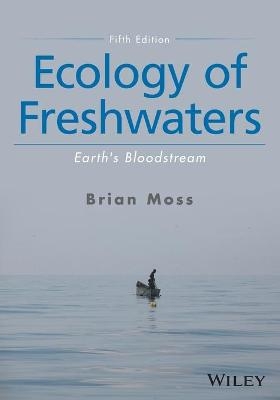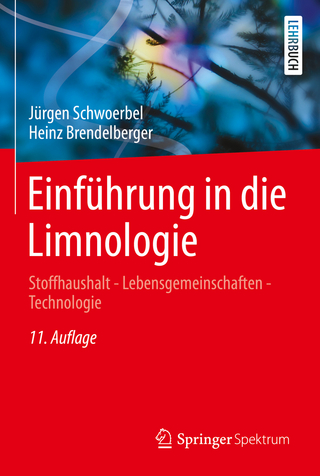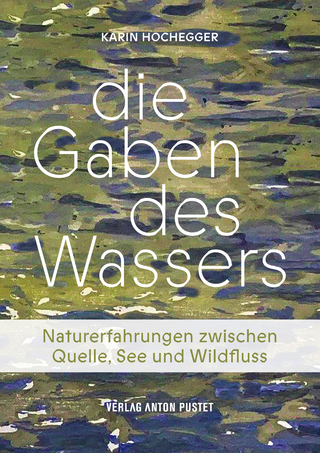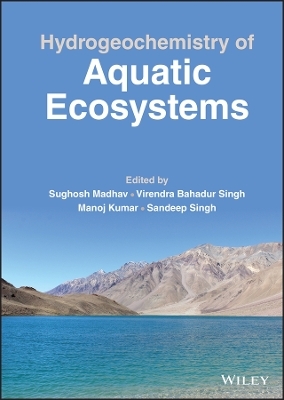
Ecology of Freshwaters
Wiley-Blackwell (Verlag)
978-1-119-23940-6 (ISBN)
The work will be of great value to undergraduate and graduate students, fellow researchers and water managers, and the plain language and lack of jargon should make it accessible to anyone interested in the functioning and current state of lakes and rivers. Having taught and researched over fifty years and six continents, Professor Brian Moss makes here extensive use of his personal experience as well as the huge literature now available on freshwaters.
This is the fifth edition of his textbook, which, since the first edition in 1980, has steadily evolved to reflect a rapidly changing science and environment. It places increasing emphasis on the role of people in damaging and managing freshwaters as we move into the Anthropocene epoch and face unprecedented levels of climate and other changes, whilst rejoicing in the fascination of what are left of near pristine freshwater ecosystems.
Professor Moss retired from the University of Liverpool following a career in Africa, the USA and the UK. He was awarded medals by the International Society for Limnology, of which he was President from 2007 to 2013, and The Institute of Ecology and Environmental Management. He was given The Ecology Institute's Excellence in Ecology Prize in 2009 and the book written for that prize, Liberation Ecology, was awarded the British Ecological Society's best ecology book prize in 2013.
Preface:Why? Chapter 1. The world as it was and the world as it is 1.1 Early ecological history 1.2 The more recent past 1.3 Characteristics of freshwater organisms 1.4 Freshwater biodiversity 1.5 A spanner in the works? 1.6 Politics and pollution 1.7 On the nature of textbooks 1.2 Further reading Chapter 2. Early evolution and diversity of freshwater organisms 2.1 Introduction 2.2 The freshwater biota 2.3 Bacteria 2.4 The variety of bacteria 2.5 Viruses 2.6 Two sorts of cells 2.7 The diversity of microbial eukaryotes 2.8 Algae 2.9 Kingdoms of eukaryotes 2.10 Further Reading Chapter 3. Diversity continued: Multicellular organisms in freshwaters 3.1 Introduction 3.2 Osmoregulation 3.3 Reproduction, resting stages and aestivation 3.4 Getting enough oxygen 3.5 Insects 3.6 Big animals, air breathers and swamps 3.7 Dispersal among freshwaters 3.8 Patterns in freshwater diversity 3.9 Fish faunas 3.10 The fish of Lake Victoria 3.11 Overall diversity in freshwaters 3.12 Environmental DNA 3.13 Further reading Chapter 4. Water: a remarkable unremarkable substance 4.1 Introduction 4.2 The molecular properties of water and their physical consequences 4.3 Melting and evaporation 4.4 How much water is there and where is it? 4.5 Patterns in hydrology 4.6 Bodies of water and their temperatures 4.7 An overview of mixing patterns 4.8 Viscosity of water and fluid dynamics 4.9 Diffusion 4.10 Further reading Chapter 5. Water as a habitat: some background water chemistry 5.1 Introduction 5.2 Polar and covalent compounds 5.3 The atmosphere 5.4 Carbon dioxide 5.5 Major ions 5.6 The big picture 5.7 Further reading Chapter 6. Key nutrients, trace elements and organic matter 6.1 Introduction 6.2 Concepts of limiting substances 6.3 Experiments on nutrient limitation 6.4 Nutrient supply and need 6.5 Phosphorus 6.6 Nitrogen 6.7 Pristine concentrations 6.8 Trace elements and silicon 6.9 Organic substances 6.10 Substance budgets and movements 6.11 Sediment-water relationships 6.12 Further reading Chapter 7. Light thrown upon the waters 7.1 Light 7.2 Effects of the atmosphere 7.3 From above to under the water 7.4 Remote sensing 7.5 Further reading Chapter 8. Headwater streams and rivers 8.1 Introduction 8.2 General models of stream ecosystems 8.3 The basics of stream flow 8.4 Flow and discharge 8.5 Laminar and turbulent flow 8.6 Particles carried 8.7 The response of stream organisms to shear stress 8.8 Community composition in streams 8.9 Algal and plant communities 8.10 Macroinvertebrates 8.11 Streams in different climates: the polar and alpine zones 8. 12 Invertebrates of kryal streams 8.13 Food webs in cold streams 8.14 Stream systems in the cold temperate zone 8.15 Allochthonous sources of energy 8.16 Stream orders 8. 17 The River Continuum Concept 8.18 Indirectly, wolves are stream animals too 8.19 Scarcity of nutrients 8.20 Warm temperate streams 8.21 Desert streams 8.22 Tropical streams 8.23 Further reading Chapter 9. Uses, misuses and restoration of headwater streams and rivers 9.1 Traditional use of headwater river systems 9.2 Deforestation 9.3 Acidification 9.4 Eutrophication 9.5 Commercial afforestation 9.6 Settlement 9.7 Engineering impacts 9.8 Alterations of the fish community and introduced species 9.9 Sewage, toxic pollution and their treatment 9.10 Diffuse pollution 9.11 River monitoring 9.12 The Water Framework Directive 9.13 Implementation of the Directive 9.14 Restoration and rehabilitation ecology 9.15 Further reading Chapter 10. Rich systems: floodplain rivers 10.1 Introduction 10.2 From an erosive river to a depositional one 10.3 Submerged plants 10.4 Growth of submerged plants 10.5 Methods of measuring the primary productivity of submerged plants 10.6 Enclosure methods 10.7 Other methods 10.8 Submerged plants and the river ecosystem 10.9 Further downstream-swamps and floodplains 10.10 Productivity of swamps and floodplain marshes 10.11 Swamp soils and the fate of the high primary production 10.12 Oxygen supply and soil chemistry in swamps 10.13 Emergent plants and flooded soils 10.14 Swamp and marsh animals 10.15 Whitefish and blackfish 10.16 Latitudinal differences in floodplains 10.17 Polar floodplains 10.18 Cold temperate floodplains 10.19 Warm temperate floodplains 10.20 Tropical floodplains 10.21 The Sudd 10.22 Further reading Chapter 11. Floodplains and human affairs 11.1 Introduction 11.2 Floodplain services 11.3 Floodplain fisheries 11.4 Floodplain swamps and human diseases 11.5 Case studies : The Pongola River 11.6 River and floodplain management and rehabilitation 11.7 Mitigation: Plant bed management in rivers 11.8 Enhancement 11.9 Rehabilitation 11.10 Inter-basin transfers and water needs 11.11 Further reading Chapter 12. Lakes and other standing waters 12.1 Introduction 12.2 The origins of lake basins 12.3 Lake structure 12.4 The importance of the catchment area 12.5 Lakes as autotrophic or heterotrophic systems 12.6 The continuum of lakes 12.7 Lake history 12.8 Organic remains 12.9 General problems of interpretation of evidence from sediment cores 12.10 Two ancient lakes 12.11 Younger lakes 12.12 Filling in 12.13 Summing up 12.14 Further reading Chapter 13. The communities of shallow standing waters: mires, shallow lakes and the littoral zone 13.1 Introduction 13.2 What determines the nature of mires and littoral zones? 13.3 Temperature 13.4 Nutrients 13.5 Littoral communities in lakes 13.6 The structure of littoral communities 13.7 Periphyton 13.8 Heterotrophs among the plants 13.9 Neuston 13.10 Linkages, risks and insurances among the littoral communities 13.11 Latitude and littorals 13.12 The role of the nekton 13.13 Further reading Chapter 14. Plankton communities of the pelagic zone 14.1 Kitchens and toilets 14.2 Phytoplankton and sinking 14.3 Photosynthesis and growth of phytoplankton 14.4 Net production and growth 14.5 Nutrient uptake and growth rates of phytoplankton 14.6 Distribution of freshwater phytoplankton 14.7 Washout 14.8 Cyanobacterial blooms 14.9 Heterotrophs in the plankton: viruses and bacteria 14.10 The microbial pathway 14.11 Zooplankton 14.12 Grazing 14.13 Feeding and grazing rates of zooplankton 14.14 Competition and predation among grazers 14.15 Predation on zooplankters by invertebrates 14.16 Fishes in the open water community 14.17 Predation on the zooplankton and fish production 14.18 Avoidance of vertebrate predation by the zooplankton 14.19 Piscivores and piscivory 14.20 Functioning of the open water community 14.21 Polar lakes 14.22 Cold temperate lakes 14.23 Warm temperate lakes 14.24 Very warm lakes in the tropics 14.25 Further reading Chapter 15. The profundal zone and carbon storage 15.1 The end of the line 15.2 The importance of oxygen 15.3 Profundal communities 15.4 Biology of selected benthic invertebrates 15.5 What the sediment-living detritivores really eat 15.6 Influence of the open water community on the profundal benthos 15.7 Sediment storage and the global carbon cycle 15.8 Further reading Chapter 16. Fisheries in standing waters 16.1 Some general principles 16.2 Some basic fish biology 16.3 Eggs 16.4 Feeding 16.5 Breeding 16.6 Choice of fish for a fishery 16.7 Measurement of fish production 16. 8 Growth measurement 16.9 Fish production and commercial fisheries in lakes 16.10 Changes in fisheries: two case studies 16.11 The East African Great Lakes 16.12 Fish culture 16.13 Stillwater angling 16.14 Amenity culture and the aquarium trade 16.14 Further reading Chapter 17. The uses, abuses and restoration of standing waters 17.1 Introduction 17.2 Services provided by standing waters 17.3 Domestic water supply, eutrophication and reservoirs 17.4 Eutrophication nutrient pollution 17.5 Dams and reservoirs 17.6 Fisheries in new lakes 17.7 Effects downstream of the new lake 17.8 New tropical lakes and human populations 17.9 Man-made tropical lakes, the balance of pros and cons 17.10 Amenity and conservation 17.11 The alternative states model 17.12 Ponds 17.13 Restoration approaches for standing waters: symptom treatment 17.14 Treatment of proximate causes: nutrient control 17.15 Present supplies of phosphorus, their relative contributions and how they are related to the algal crop 17.16 Methods available for reducing total phosphorus loads 17.17 In-lake methods 17.18 Complications for phosphorus control - sediment sources 17.19 Nitrogen reduction 17.20 Habitat creation 17.21 Further reading Chapter 18. Climate change and the future of freshwaters 18.1 Introduction 18.2 Climate change 18.3 Existing effects of freshwaters 18.4 Future effects 18.5 Future effects on freshwaters 18.6 Switches and feedbacks 18.7 Wicked problems 18.8 Mitigation of global warming 18.9 The remedy of ultimate causes 18.10 Rewilding the world 18.11 Reforming governments 18.12 Further reading
| Erscheinungsdatum | 26.05.2018 |
|---|---|
| Verlagsort | Hoboken |
| Sprache | englisch |
| Maße | 179 x 250 mm |
| Gewicht | 1134 g |
| Einbandart | kartoniert |
| Themenwelt | Naturwissenschaften ► Biologie ► Limnologie / Meeresbiologie |
| Naturwissenschaften ► Biologie ► Ökologie / Naturschutz | |
| Naturwissenschaften ► Geowissenschaften ► Hydrologie / Ozeanografie | |
| ISBN-10 | 1-119-23940-0 / 1119239400 |
| ISBN-13 | 978-1-119-23940-6 / 9781119239406 |
| Zustand | Neuware |
| Haben Sie eine Frage zum Produkt? |
aus dem Bereich


